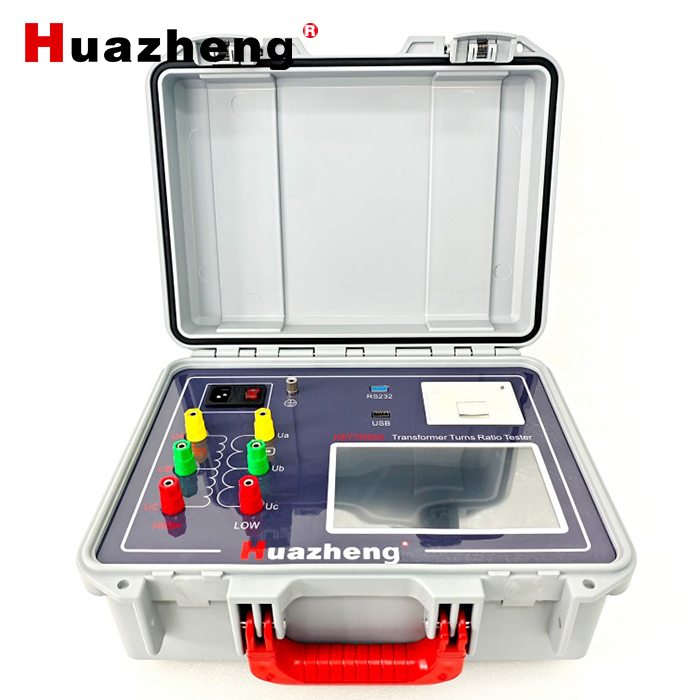The transformer ratio tester is mainly used to test the following key items to ensure that the performance of the transformer meets the design specifications:
Transformation ratio (turns ratio) measurement
Accurately measure the voltage ratio between the primary (high voltage) and secondary (low voltage) windings of a transformer to verify compliance with the rated transformer ratio requirements.
Analysis of Variable Ratio Error
Calculate the percentage deviation between the measured transformation ratio and the theoretical value, and determine whether it is within the allowable error range (usually ± 0.5%).
Connection group determination
Identify the connection method of three-phase transformers (such as Yyn0, Dyn11, etc.), ensure correct winding connection, and avoid operational faults caused by phase errors.
Phase difference detection
Measure the phase angle difference between the primary and secondary voltages to confirm if it meets the standards corresponding to the connection group (such as 30 °, 180 °, etc.).
POLARITY
Verify the correctness of the same polarity end of the winding to ensure phase consistency when the transformer is connected in parallel or series.
Abnormal diagnosis of winding
Indirectly detect winding defects such as inter turn short circuits, open circuits, or poor contacts through abnormal transformation ratios, and assist in troubleshooting.
Automatic functions and data analysis
Automatically switch ranges, calculate and display results to improve testing efficiency.
Data storage and report generation facilitate subsequent analysis and recording.
HZTTR80A Transformer Turns Ratio Tester
